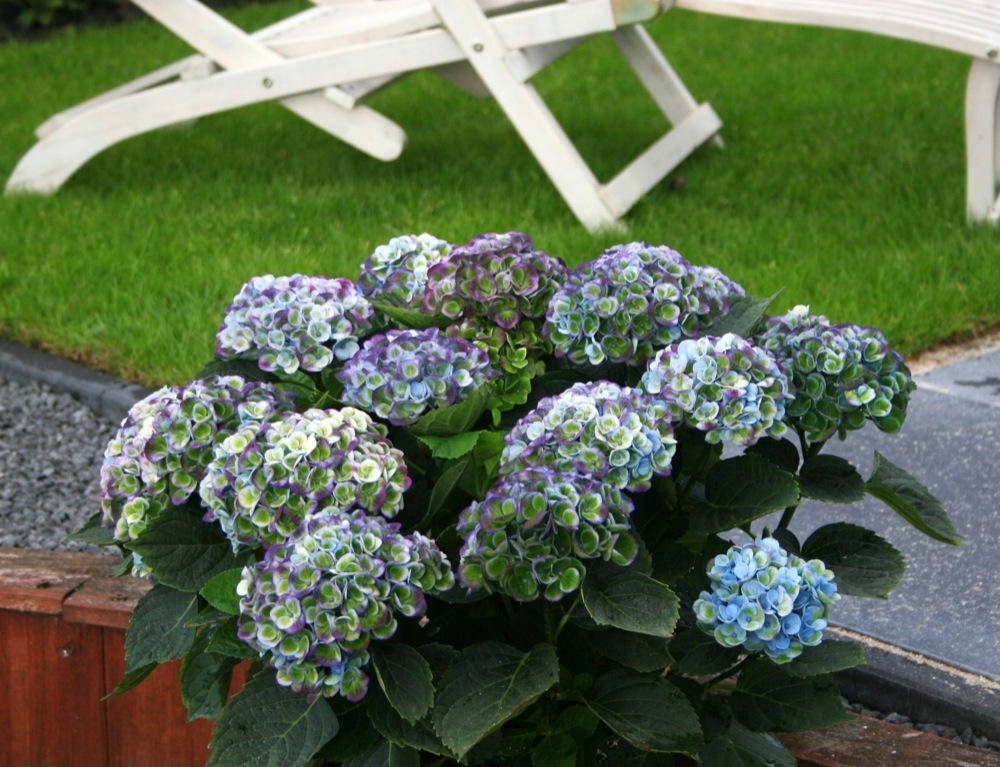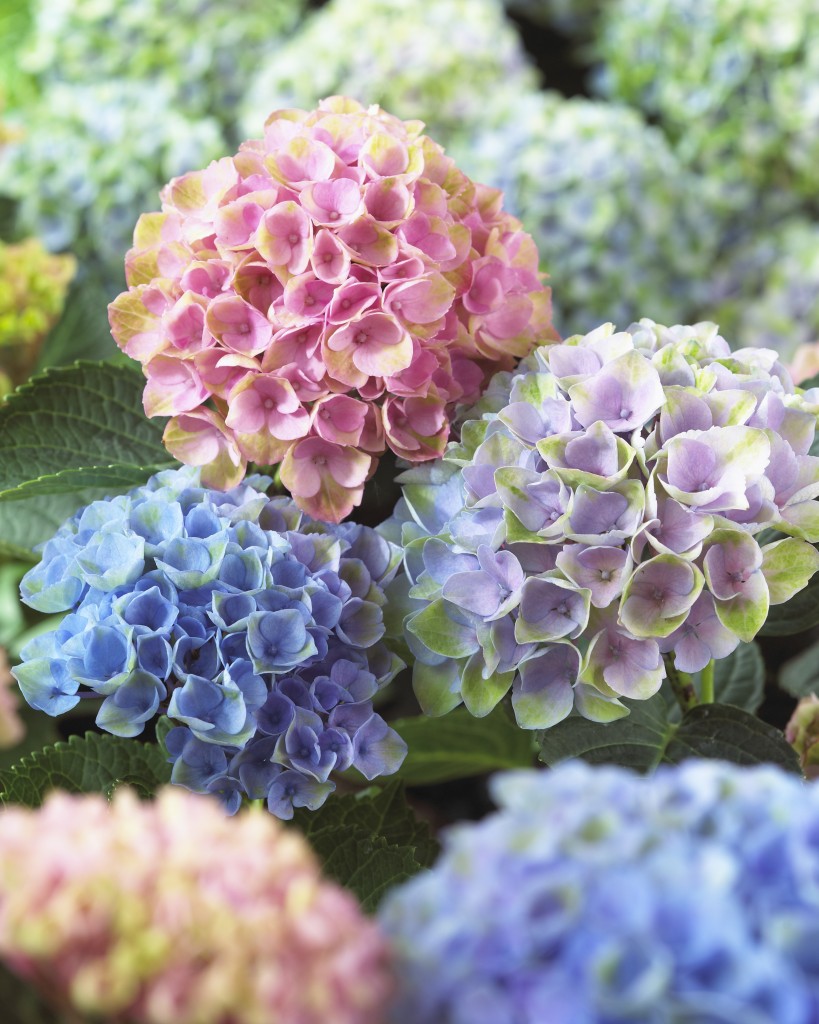Changing Hydrangea Flower Colors
If you have always been confused about when and how to how to make the pink flowers turn blue, here are some tips for you.
A common question we get about hydrangeas that can have either pink or blue flowers is:
How do I change the color of the flowers?
To change the flower from Blue to Pink (this does not apply to white or green flowers like Noblesse):
For hydrangea flowers to be pink, the plants must not take up aluminum from the soil. If the soil naturally contains aluminum, you must try to keep it away from the hydrangea’s system.

Try this if you would rather have PINK flowers:
Add dolomitic lime several times a year. This will help to raise the pH. Shoot for a pH of about 6.0 to 6.2 (If it goes above 6.4 hydrangeas may experience an iron deficiency, which will make their leaves turn yellow). Since hydrangeas take up aluminum best at lower pH levels, raising the pH will help to keep the bluing effect of aluminum out of the hydrangea’s system.
Use a fertilizer with high levels of phosphorus. Phosphorus helps to prevent aluminum from creeping into the system of the hydrangea. Choose a fertilizer close to the ratio of 25/10/10 (Phosphorus is the middle number)
In areas that naturally produce blue hydrangeas (soils with aluminum), consider growing pink hydrangeas in large pots. If hydrangeas are grown in pots, it would be best to use potting soil, not garden or topsoil, since these mixes should not have aluminum in them. In a pot, it will be much easier to control the requirements for growing pink hydrangeas.
Try this if you would like to have BLUE flowers.
To make hydrangea flowers blue, aluminum must be present in the soil. To ensure that aluminum is present, aluminum sulfate may be added to the soil around the hydrangeas. We recommend that a solution of 1/2 oz (1 Tbsp) aluminum sulfate per gallon of water be applied to plants throughout the growing season.
Important: Make sure your soil is a little wet before you do this because the mixture can burn dried-out roots. To make the aluminum available to the plant, the pH of the soil should be low (5.2-5.5). Adding aluminum sulfate will lower the pH of the soil. Another method for lowering the pH is to add organic matter to the soil such as coffee grounds, fruit and vegetable peels, grass clippings, etc. If the soil naturally contains aluminum and is acidic (low pH) the color of the hydrangea will automatically be blue and/or purple.
The choice of fertilizer will also affect the color change. A fertilizer low in phosphorus and high in potassium is helpful in producing a good blue color (25/5/30 is good). Potassium is the last number). Super-phosphates and bonemeal should be avoided when trying to produce blue.
Note 1: Unfortunately, it is virtually impossible to turn a hydrangea blue forever if it is planted in soil with no aluminum and that is highly alkaline (chalky). You have to be very diligent in keeping the soil properly conditioned on a continual basis as stated above.
Perhaps the best idea for growing blue hydrangeas in an area with alkaline soil is to grow them in very large pots using lots of compost to bring the pH down. Our recommendations for bluing also work for a potted plant. Reduce the strength of the Aluminum sulfate to 1/4 oz per gallon of water. In a pot, it is much easier to control the requirements for bluing and since these are hardy to USDA zone 5.
Note 2: Planting hydrangeas near a concrete foundation or sidewalk will often affect the color since the pH of the soil may be raised considerably by lime leaching out of these structures, making it difficult to obtain blue.